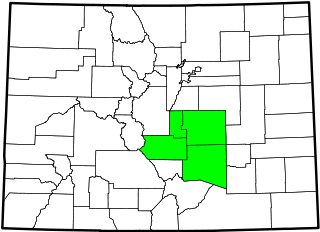| First name | Last name | Image | Birth–Death | Year | Description |
|---|
| Charles | Autobees | | (1812–1882) | 1847 | Trapper, trader, and founder of Autobees, Colorado. |
| James | Beckwourth |  | (c. 1799–c. 1866) | 1822 (c.) | American mountain man, fur trader, and explorer. He was mixed-race and born into slavery in Virginia. He worked at Bent's Fort for a period of time and was one of the co-founders of El Pueblo, now Pueblo, Colorado. |
| Clara | Brown | 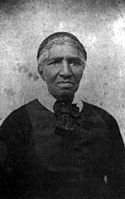 | (c. 1800–1885) | | Businesswoman, investor, and philanthropist. Aided the settlement of former slaves during Colorado's Gold Rush |
| Isom | Dart |  | (1849-1900) | | Born Ned Huddleston, he was a rodeo clown and stunt rider, rancher, and horse and cattle rustler during the late 19th century in the Wild West. He changed his name to Isom Dart when he bought a ranch and settled in Browns Park in northwestern Colorado. He was killed for cattle-rustling. |
| Elizabeth Piper | Ensley |  | (1847–1919) | 1887 | She moved to Colorado where she achieved prominence as a leader in the Colorado suffrage movement. She was also a journalist, activist, and a leader and founder of local women's clubs. |
| Barney | Ford |  | (1822–1902) | 1860 | Ran away using the Underground Railroad, he lived in several places in the United States and in Central America before he staked a claim in Colorado in 1860. He was a civil rights activist and a successful businessman. He helped freed slaves attain an education. |
| Justina | Ford | 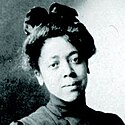 | (1871–1952) | 1902 (c.) | She was the first licensed African American female doctor in Denver, Colorado, and practiced gynecology, obstetrics, and pediatrics from her home for half a century. |
| Julia | Greeley |  | (c. 1833-48–1918) | 1865 (c.) | Servant of God Julia Greeley O.F.S. was born enslaved. After she was emancipated, she came to Colorado and worked for Julia Dickerson and William Gilpin. She was domestic servant thereafter. Poor herself, she donated food and clothing, tended children, and spread the Catholic faith. |
| Charlotte | Green | | d. after 1850 | 1833 | Enslaved cook and entertainer at Bent's Fort |
| Dick | Green | | d. by 1850 | 1833 | Enslaved worker at Bent's Fort, fought in Siege of Pueblo de Taos, after which he and his wife were freed. |
| John T. | Gunnell | | (1836–1902) | 1881 (by) | He was a state legislator in Colorado. He served in the Colorado House of Representatives in 1881, and was the first African American to serve in the Colorado Legislature. |
| Edwin H. | Hackley | 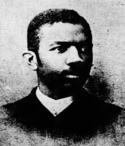 | (1859–1940) | | He was the first black lawyer admitted to the Colorado Bar Association (1883). He was the editor and publisher of The Colorado Statesman and published Hackley & Harrison's hotel and apartment guide for colored travelers, six years before The Negro Motorist Green Book |
| Emma Azalia | Hackley |  | (1867–1922) | | After high school, she worked as an elementary school teacher before meeting and marrying Edwin Henry Hackley, an attorney and newspaper publisher from Denver, Colorado. She was a singer and political activist. She promoted racial pride through her support and promotion of music education for African Americans. |
| William Jefferson | Hardin |  | (c. 1831 –1889) | 1872 (by) | Born free in Kentucky, he came to Colorado in 1863. He was the mayor of Leadville, fought for civil rights, and was the first African American elected to the Wyoming Territory Legislative Assembly |
Oliver Toussaint
(O. T.) | Jackson |  | (1862–1948) | 1887 | Inspired by Up from Slavery by Booker T. Washington, he formed Dearfield, Colorado, a self-sufficient agricultural settlement for black Americans. Jackson was a successful owner of several restaurant and catering businesses in Denver and Boulder. |
| Junius R. | Lewis | | (1842–1938) | | Lewis was enslaved in Mississippi and was captured as a runaway and became an orderly for E. E. Johnson during the American Civil War. After the war, he was a teacher, head of a railroad office, president of a mining company, and mine owner. |
| Nancy | Lancaster | | | 1865 (before) | Obtained the money to purchase their freedom, called a "liberty free". A pastor in Kansas provided $600 to pay for Nancy's freedom. She and her husband Samuel lived in a cabin in Denver. [1] |
| Samuel | Lancaster | | | 1865 (before) | Samuel worked in mining camps as a barber. He earned $1,200 (equivalent to $25,223 in 2020) to purchase his freedom. He and his wife Nancy lived in a cabin in Denver. [1] |
| William J. | Payne | | (d. 1864) | 1859 (by) | He arrived in Denver as an enslaved blacksmith, working for the Central Overland California and Pike's Peak Express. After he was emancipated he was tried in 1859 for the murder of fellow African American Oliver Davis; he claimed self-defense and was acquitted. In 1864, he was shot by James Beckwourth in Beckwourth's saloon. Beckwouth was acquitted. [1] |
| Edward J. | Sanderlin |  | (1835–1909) | 1859 | He was born into slavery and came to Colorado in 1859, during the Pike's Peak Gold Rush (1858–1861). He became a successful businessman in Denver. |
| Joseph H. | Stuart | 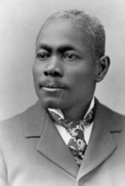 | (1854–1910) | 1891 | From the British West Indies, he settled in Colorado and in 1891 was the second black lawyer that practiced law. |
| John | Taylor | | | 1865 (after) | Born into slavery in Kentucky, he served during the Civil War and afterwards to fight Native Americans. After he was discharged, he joined a band of Utes and settled in the San Juan Valley. [1] |
| Henry O. | Wagoner |  | (1816–1901) | 1860 | He was an Underground Railroad conductor before moving to Colorado. He promoted civil rights and paid legal fees for fugitive slaves. |
| Madam C. J. | Walker |  | (1867–1919) | 1905 | Walker was an entrepreneur, philanthropist, and political and social activist. She is recorded as the first female self-made millionaire in America in the Guinness Book of World Records |
| Elijah | Wentworth | | | | Known as "Lige," he was born into slavery in Virginia, but knew nothing about his birth or family. He arrived in Missouri with his enslaver's family. He was able to join a wagon train heading west as a cook. He was stationed at Union Station where he welcomed those stepping off trains. He was a town crier and a singer. |
| Cathay | Williams | | (1844–1893) | 1868 (after) | She was an African-American soldier who enlisted in the United States Army under the pseudonym William Cathay. She was the first Black woman to enlist, and the only documented woman to serve in the United States Army posing as a man during the American Indian Wars. [1] |
| | | | | |
|


















